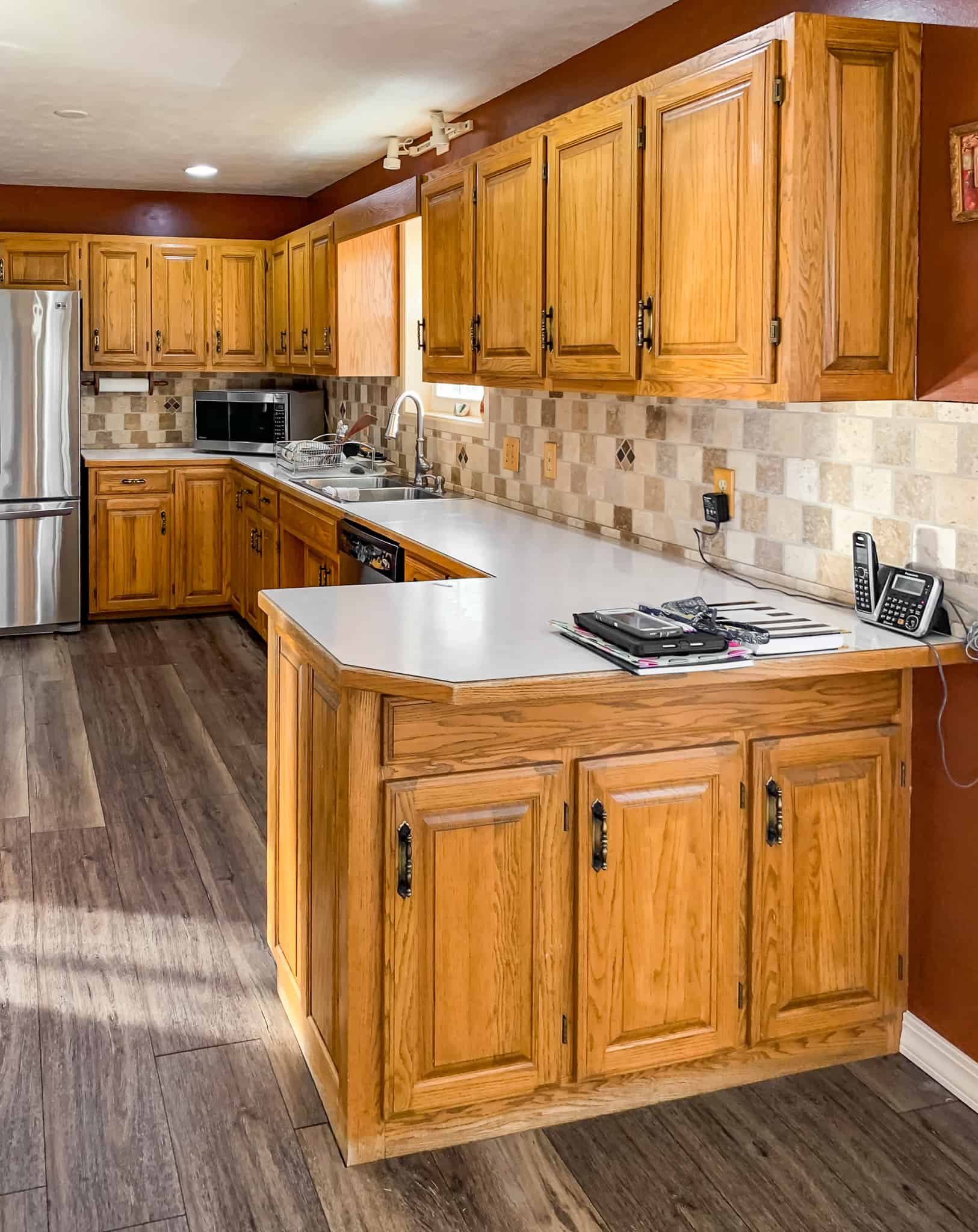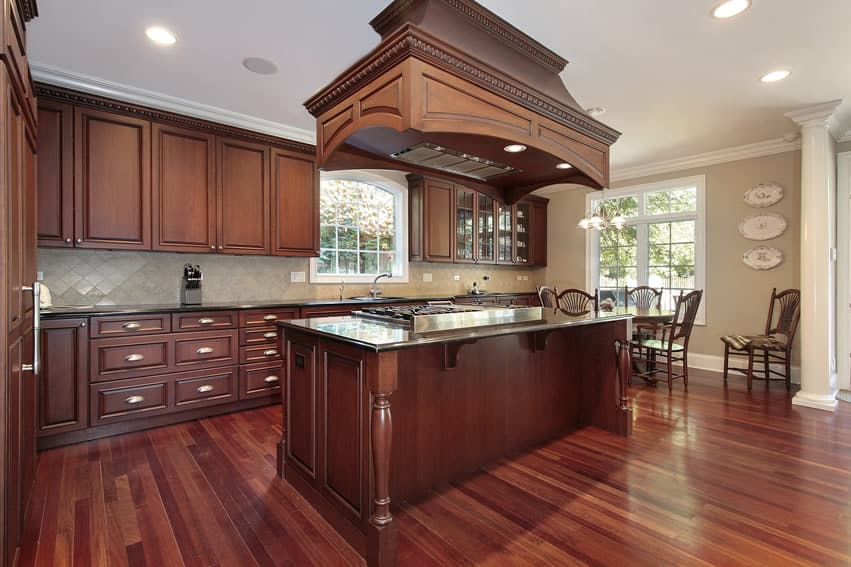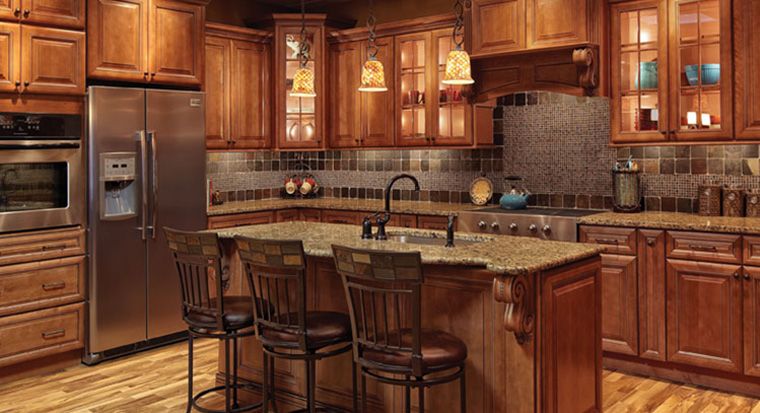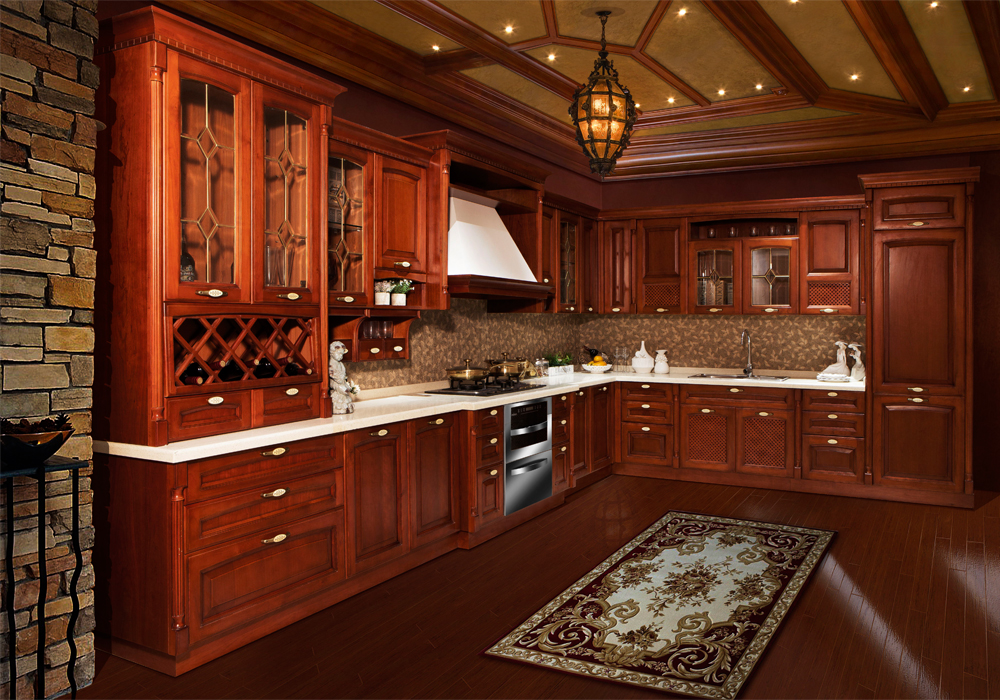Choosing bleached wood kitchen cabinets is a fantastic way to bring a fresh, modern, and light aesthetic to your kitchen. This design trend, which emphasizes the natural beauty of wood while adding a touch of brightness, is becoming increasingly popular for its ability to make spaces feel open and airy. Bleaching wood removes its natural color, resulting in a pale, almost white finish that can range from subtly lightened to dramatically pale, depending on the process and the wood type. This approach not only enhances the visual appeal but also highlights the unique grain patterns of the wood, making each cabinet a unique piece.
Bleached wood cabinets can transform a kitchen, creating a serene and sophisticated atmosphere. They work particularly well in contemporary and minimalist designs, where their light color helps to open up the space and create a sense of calm. The neutral tone of bleached wood can be paired with various countertop materials, backsplashes, and flooring options, offering great flexibility in design. Whether combined with bold colors for contrast or with other neutrals for a monochromatic look, bleached wood cabinets provide a versatile foundation for any kitchen design.

One of the key advantages of bleached wood cabinets is their ability to brighten up a kitchen without the need for excessive lighting or bold color choices. Natural light reflects off the pale surfaces, making the space appear larger and more inviting. This is particularly beneficial in smaller kitchens or those with limited natural light, where darker cabinets might make the space feel cramped or gloomy. By opting for bleached wood, you can create an environment that feels spacious and welcoming.
The bleaching process itself involves removing the natural color from the wood using a bleaching agent, often a mixture of water and bleach or other chemical compounds. This process can be done professionally or as a DIY project, though it requires careful handling and proper ventilation due to the chemicals involved. Once the desired level of bleaching is achieved, the wood is typically sealed with a clear finish to protect it from moisture and stains while preserving its light appearance. This finish can range from matte to glossy, depending on the desired look.

Maintenance of bleached wood cabinets is relatively straightforward, but it does require some special care to preserve their appearance. Regular dusting and wiping down with a damp cloth are usually sufficient for everyday cleaning. It’s important to avoid harsh chemicals and abrasive cleaners, as these can damage the finish and affect the color of the wood. Using gentle, wood-specific cleaning products can help maintain the cabinets’ beauty and longevity. Periodically reapplying the protective finish may also be necessary to keep the wood in top condition.
Bleached wood cabinets are highly customizable, allowing for various levels of bleaching and finishes to suit individual preferences. For instance, some might prefer a heavily bleached look for a strikingly modern appearance, while others might opt for a subtler bleaching effect that retains more of the wood’s natural warmth and character. This customization makes bleached wood cabinets a versatile choice for different kitchen styles, from ultra-modern to Scandinavian-inspired to rustic chic.

One of the most appealing aspects of bleached wood cabinets is their timelessness. Unlike some design trends that can quickly become dated, the natural, light appearance of bleached wood is likely to remain stylish for many years. This longevity makes them a wise investment for homeowners looking to create a kitchen that will stay fresh and modern over time. Additionally, the neutral palette of bleached wood can easily be updated with new hardware, countertops, or backsplash choices, allowing for periodic refreshes without the need for a complete overhaul.
Bleached wood cabinets also pair well with a variety of materials and colors. For a cohesive look, you can combine them with light-colored countertops and backsplashes, creating a seamless and airy kitchen design. Alternatively, for a more dynamic and contrasting effect, pair them with dark countertops or bold-colored accents. Metals like stainless steel, brass, or black fixtures also complement bleached wood beautifully, adding a touch of modernity and elegance to the kitchen.
In terms of sustainability, choosing bleached wood cabinets can be an eco-friendly option, especially if you select wood from sustainably managed forests or reclaimed wood. The bleaching process itself doesn’t significantly impact the environmental friendliness of the wood, making it a viable option for those looking to create an environmentally conscious kitchen. Additionally, wood cabinets can be recycled or repurposed at the end of their life cycle, further contributing to sustainability.
When considering bleached wood cabinets, it’s important to think about the overall design and functionality of your kitchen. While they add a beautiful aesthetic, they should also meet your storage needs and fit seamlessly into your kitchen layout. Custom cabinetry allows you to tailor the design to your specific requirements, ensuring that the cabinets not only look great but also enhance the usability of your kitchen. Features like pull-out shelves, integrated lighting, and soft-close hinges can add to the functionality and luxury of your bleached wood cabinets.

The cost of bleached wood cabinets can vary depending on the type of wood, the level of customization, and whether you choose to bleach the wood yourself or hire a professional. While this option might be more expensive than standard wood finishes, the unique and high-end look they provide can add significant value to your home. It’s essential to balance your budget with your design goals to achieve a kitchen that you love within a price range that works for you.
Bleached wood cabinets can also be a great DIY project for those who enjoy hands-on home improvement. With the right tools and materials, you can bleach and finish the wood yourself, allowing for complete control over the final look. However, it’s crucial to follow safety guidelines and ensure proper ventilation when working with bleach and other chemicals. Thoroughly researching the process and possibly practicing on a small piece of wood first can help ensure success.
The aesthetic of bleached wood cabinets can be enhanced with thoughtful accessorizing. Consider incorporating natural elements like plants or stone accents to complement the organic feel of the wood. Choosing hardware that contrasts with the light wood, such as black or brass handles and knobs, can add visual interest and a touch of sophistication. The combination of these elements can result in a kitchen that feels both cohesive and stylish.
Bleached wood kitchen cabinets offer a beautiful, versatile, and timeless option for modern kitchens. Their light color can brighten up the space, making it feel larger and more welcoming, while their natural grain adds warmth and character. With proper care and maintenance, bleached wood cabinets can remain a stunning feature of your kitchen for many years, providing both aesthetic and functional benefits.

Common Mistakes to Avoid
When incorporating bleached wood cabinets into your kitchen, there are several common mistakes to avoid to ensure the best results. One of the biggest mistakes is not properly sealing the wood after bleaching. Without a protective finish, the wood is more susceptible to stains, moisture damage, and wear and tear. Applying a high-quality sealant can help protect the wood and maintain its beautiful appearance.
Another common mistake is using harsh or abrasive cleaners on bleached wood cabinets. These can damage the finish and alter the color of the wood. Instead, opt for gentle, wood-specific cleaning products and avoid scrubbing the surface too hard. Regular, gentle cleaning will help preserve the cabinets’ look without causing damage.
Failing to test the bleaching process on a small, inconspicuous area of the wood before applying it to the entire cabinet is another mistake. Wood can react differently to bleaching agents, and testing first can help you achieve the desired level of bleaching without overdoing it. This step is crucial to ensure that you are happy with the final result.
Improper ventilation during the bleaching process is a significant oversight. The chemicals used in bleaching can be harmful if inhaled, so it’s essential to work in a well-ventilated area and wear protective gear such as gloves and masks. Ensuring proper ventilation can protect your health and help the bleaching process go more smoothly.

Choosing the wrong type of wood for bleaching can also lead to unsatisfactory results. Not all woods react well to the bleaching process, and some may not achieve the desired lightness or may have uneven color changes. Researching and selecting a wood type known for good bleaching results, such as oak or maple, can help ensure a beautiful and consistent finish.
Ignoring the overall kitchen design when selecting bleached wood cabinets can result in a disjointed look. It’s important to consider how the cabinets will integrate with other elements in the kitchen, such as countertops, backsplashes, and flooring. Ensuring a cohesive design plan will create a harmonious and visually appealing kitchen.
Last, skimping on professional help when needed can lead to mistakes and unsatisfactory results. While DIY bleaching is possible, it requires careful handling and knowledge of the process. Hiring a professional can ensure that the cabinets are bleached and finished correctly, providing a high-quality result that will last for years.

How do I maintain bleached wood cabinets to keep them looking new?
Maintaining bleached wood cabinets involves regular dusting and gentle cleaning with a damp cloth and mild soap. It’s important to avoid harsh chemicals and abrasive cleaners, as they can damage the finish and alter the color of the wood. Periodically reapplying a clear, protective finish helps protect the wood from moisture and stains. Using gentle, wood-specific cleaning products can help maintain the cabinets’ beauty and longevity. Regular maintenance will keep your cabinets looking beautiful and extend their lifespan.
Are bleached wood cabinets durable enough for a busy kitchen?
Bleached wood cabinets are durable but require proper care to withstand the demands of a busy kitchen. Hardwoods like oak and maple are particularly durable and resistant to wear and tear. Regular maintenance, such as sealing and cleaning, helps protect the wood from damage. While wood can scratch and dent, these imperfections can often be sanded out and refinished. Using cutting boards and avoiding direct contact with hot pots and pans will also help maintain the wood’s durability. With the right care, bleached wood cabinets can last for many years.
What types of wood are best for bleaching?
The best types of wood for bleaching include hardwoods like oak, maple, and ash. These woods have a relatively uniform grain and light natural color, which responds well to the bleaching process. Oak is particularly popular due to its durability and beautiful grain pattern, while maple offers a smooth, even surface that bleaches evenly. Ash is another good option, providing a light, consistent finish. Choosing the right type of wood is crucial for achieving a beautiful and consistent bleached look.

Can I bleach my wood cabinets myself, or should I hire a professional?
You can bleach your wood cabinets yourself, but it requires careful handling and knowledge of the process. The bleaching process involves using chemical agents, which can be harmful if not handled properly. If you choose to DIY, ensure proper ventilation, wear protective gear, and follow safety guidelines. Testing the bleaching process on a small area first is also important. Hiring a professional can ensure that the cabinets are bleached and finished correctly, providing a high-quality result that will last for years. If you are unsure about the process or want the best results, seeking professional help is advisable.
How do I choose the right finish for my bleached wood cabinets?
Choosing the right finish for bleached wood cabinets depends on your desired look and maintenance level. A clear, protective finish such as polyurethane or varnish can help protect the wood from moisture and stains while preserving its light appearance. Matte finishes offer a natural look, while glossy finishes can add a touch of sophistication. Water-based finishes are also an option for those seeking low-VOC and environmentally friendly products. Consider the level of use your cabinets will receive and how much maintenance you’re willing to perform when selecting a finish.
Are bleached wood cabinets environmentally friendly?
Bleached wood cabinets can be environmentally friendly if sourced from sustainably managed forests or reclaimed wood. Many manufacturers offer certified sustainable wood options, ensuring that the wood is harvested in an eco-friendly manner. The bleaching process itself doesn’t significantly impact the environmental friendliness of the wood, making it a viable option for those looking to create an environmentally conscious kitchen. Additionally, wood cabinets can be recycled or repurposed at the end of their life cycle, further contributing to sustainability. Properly maintained wood cabinets also have a long lifespan, reducing the need for frequent replacements and minimizing waste.

Related Posts:
- Craigslist San Antonio Kitchen Cabinets
- White Kitchen Sink Cabinet
- Kitchen Craft Pantry Cabinet
- What Is The Average Cost Of Refacing Kitchen Cabinets
- Kitchen Cabinets With Different Color Island
- Kitchen Cabinet Specialist
- Ebony Stained Kitchen Cabinets
- How Much To Install New Kitchen Cabinets
- Second Hand Kitchen Cabinet Doors
- Craftsman Kitchen Cabinets For Sale